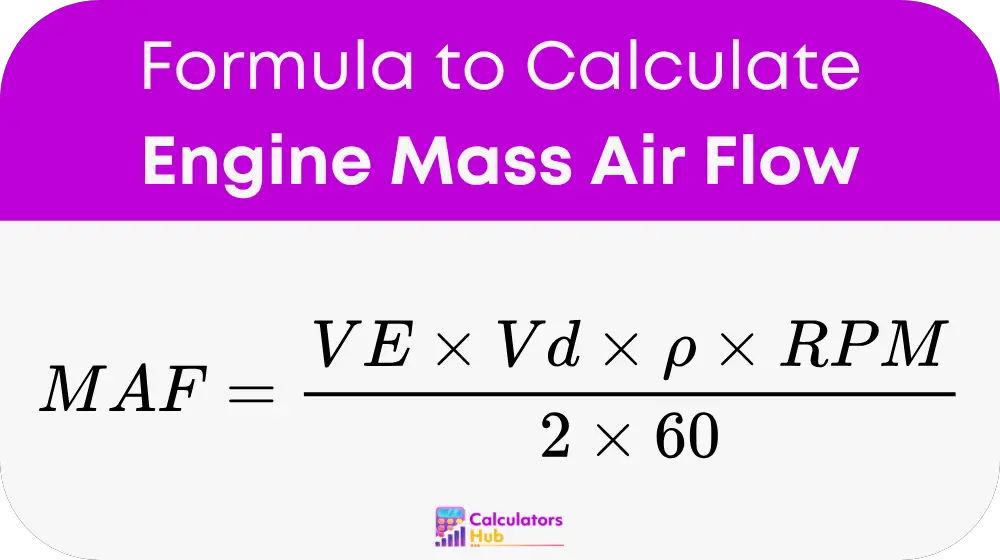The Engine Mass Air Flow Calculator estimates the mass of air an engine draws in per second, based on engine displacement, RPM, air density, and volumetric efficiency. It is widely used in engine tuning, diagnostics, fuel mapping, and intake system design. This calculator belongs to the Automotive Engineering and Engine Performance Calculator category.
Knowing the correct mass air flow (MAF) helps engineers and mechanics tune engines more precisely, improve fuel injection control, calculate ideal air-fuel ratios, and design compatible intake and turbo systems.
Formula of Engine Mass Air Flow Calculator

Detailed Breakdown:
- MAF = Mass Air Flow, measured in kilograms per second (kg/s)
- VE = Volumetric Efficiency (decimal form, e.g., 0.85 for 85%)
- Vd = Displacement per intake cycle in cubic meters (m³)
- ρ = Air density (kg/m³). Standard air density at 25°C and 1 atm is approximately 1.184 kg/m³
- RPM = Engine speed in revolutions per minute
- 2 = Because each cylinder in a 4-stroke engine intakes air every second revolution
- 60 = Converts RPM to revolutions per second
This equation estimates how much air enters the engine, which is vital for managing combustion efficiency and maximizing output.
Quick Reference Table
This table provides estimates of mass air flow at different RPMs for a 2.0L engine with 85% volumetric efficiency at standard air density:
| RPM | MAF (kg/s) |
|---|---|
| 1000 | 0.033 |
| 3000 | 0.100 |
| 5000 | 0.167 |
| 7000 | 0.234 |
These values help quickly approximate airflow under different operating conditions.
Example of Engine Mass Air Flow Calculator
Let’s calculate the mass air flow for a 3.0L engine (0.003 m³), running at 6000 RPM, with 90% VE and standard air density.
Step 1:
Plug values into the formula:
MAF = (0.90 × 0.003 × 1.184 × 6000) / (2 × 60)
Step 2:
MAF = (0.0031968 × 6000) / 120 = 19.1808 / 120 = 0.1598 kg/s
So, the engine draws approximately 0.16 kilograms of air per second at 6000 RPM.
Most Common FAQs
MAF directly affects air-fuel mixture. Accurate MAF readings allow precise fuel injection and better engine performance, fuel efficiency, and emissions control.
Air density changes with temperature, altitude, and humidity. Colder or lower altitude air is denser, increasing MAF.
Yes, but you must account for the increased intake pressure and temperature after the turbo. Use corrected air density values for accuracy.